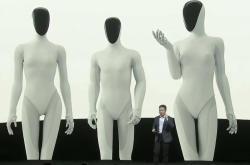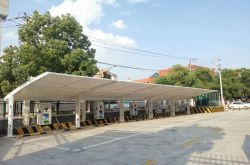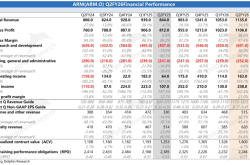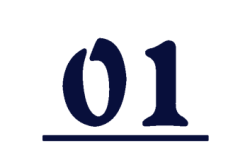China's Auto Industry Relies on Central and State-Owned Enterprises in Times of Need
![]() 06/17 2025
06/17 2025
![]() 466
466
Prolonged payment terms suffocate the supply chain, necessitating radical reform spearheaded by central enterprises.
Body
In June 2024, a collective initiative to reshape the payment order in the automotive industry commenced.
Led by prominent central and state-owned enterprises such as FAW, Dongfeng Motor Group, Changan Automobile, GAC Group, and SAIC Motor, and joined by private enterprises and emerging players like Geely, BYD, Lixiang, and NIO, a total of 17 mainstream automakers publicly endorsed national policies, pledging to cap supplier payment terms at 60 days.
This move was highly commended by the Ministry of Industry and Information Technology.
Subsequently, several automakers committed to paying sales incentives and rebates to dealers within 60 days, including GAC Group, BMW, BAIC BJEV, SAIC-GM, FAW-Audi, and Yueda Kia.
During critical junctures, central and state-owned enterprises have played a pivotal role in stabilizing China's fiercely competitive automotive industry.
Why a 60-Day Payment Term?
Payment terms should facilitate smooth commercial transactions by balancing cash flow and risks between suppliers and buyers. However, in the domestic auto industry, this mechanism is severely imbalanced, characterized by excessively long payment terms that surpass international norms and even result in malicious defaults.
According to 2024 annual reports, mainstream automakers such as XPeng (232.79 days), Dongfeng (226 days), Changan (204.54 days), and NIO (194.93 days) generally have payment terms ranging from 100 to 230 days. Even those with shorter terms, like BAIC (83 days) and Zeekr (75 days), exceed the 60-day commitment.
In contrast, internationally renowned automakers and core suppliers, like Toyota and Honda, typically have payment terms of 30-60 days, while large European automakers generally fall within the 60-90-day range. The average payment term for domestic automakers is markedly higher than international standards.
The detrimental effects of these prolonged payment terms are evident among upstream suppliers in the auto industry.
Take PATEO, a domestic smart cockpit supplier, as an example. For segments like smart cockpits, which face compression from both upstream and downstream, high customer dependency, and slim profit margins, there's limited bargaining power when automakers request extended payment terms.
According to its prospectus, PATEO incurred a net loss of RMB 541 million in 2024, primarily due to increased impairment losses on trade receivables from an OEM customer. The company also faces credit risks related to delayed payments and defaults from multiple customers. From 2022 to 2024, the company's trade receivables were RMB 419 million, RMB 620 million, and RMB 1.125 billion, respectively, with trade receivable turnover days of 91 days, 127 days, and 125 days.
One might ask, couldn't the company improve its product competitiveness and strive for higher prices?
PATEO does aspire to do so, allocating around 20% of its revenue to R&D expenses annually, which is quite high within the industry. However, with operating cash flow being negative for three consecutive years, it's even more challenging for the company to allocate funds towards R&D.
Another significant harm of long-term accounts receivable has emerged, not only disrupting corporate cash flow and increasing bankruptcy risks but also hindering local core technological innovation.
Black Sesame Technologies, a Chinese autonomous driving chip company, has also suffered considerably. Despite achieving profitability in 2024, the turnover days of receivables from private customers were still as high as 211 days, resulting in consistently negative operating cash flow (-RMB 1.19 billion in 2024), severely constraining its R&D investment and mass production capabilities.
The auto industry has been in a state of extreme "internal competition" in recent years, marked by intense rivalry. At the recent Chongqing Auto Show, several self-owned brands engaged in a fierce public relations war.
As price wars and verbal battles escalate, malicious competition intensifies. For small and medium-sized enterprises with already fragile capital chains, excessively long payment terms are akin to a noose, exacerbating cash flow pressures, forcing them into high-cost financing, eroding their survival foundations, and ultimately undermining the healthy development of the entire business ecosystem.
Central and State-Owned Enterprises as the Ballast
Amid the chaos of industry order, there's an urgent need for a "leader" with sufficient scale and credibility to break the deadlock and restore the industry to normal development.
Why did central and state-owned enterprises take the lead? On the one hand, central enterprises are directly supervised by the State-owned Assets Supervision and Administration Commission, and local state-owned enterprises need to serve the regional economy. On the other hand, central and state-owned enterprises possess a vast joint venture system and relatively standardized internal risk control. With their state backing and market position, central and state-owned enterprises have natural advantages and responsibilities in complying with regulations and fulfilling social responsibilities.
It's evident that during this special period, central and state-owned enterprises have played a crucial role in maintaining industry order and fostering healthy development.
In the past, compared to private enterprises pursuing agile operational changes, central and state-owned enterprises often gave the impression of being inefficient and cumbersome. However, when industry chaos frequently occurs, their relatively stable and low-key image becomes a positive benchmark, possessing the leadership to reshape order.
Strictly enforcing the 60-day payment term regulation has far-reaching and complex impacts on the industry.
In the short term, it has an immediate positive effect on the auto industry supply chain. If strictly enforced, shortening the payment term from over 200 days to 60 days means that suppliers' capital turnover efficiency will increase by more than three times. This will immediately alleviate their short-term debt repayment pressure, reduce financing costs, and operational risks.
With improved cash flow, suppliers' willingness to invest will also rebound, and stable expectations will safeguard innovation. Supply chain stability will further improve, ensuring automakers' production plans and delivery schedules. This is particularly significant during critical periods such as ramp-up in production capacity or new product launches.
Moreover, reversing the negative image of the auto industry "squeezing suppliers" will also enhance the attractiveness of the entire industrial chain and investor confidence.
However, everything has two sides, and automakers will face more challenges and pain.
The most immediate impact is a sharp increase in short-term financial pressure, especially for some new entrants and financially strained players, who will see a surge in working capital requirements. They are likely to need to increase short-term financing, leading to higher interest expenses. At the same time, it will accelerate industry differentiation and shuffling. Automakers with poor financial conditions, excessive reliance on financing, or aggressive expansion will face increased survival pressure and may be forced to exit or be integrated.
In the long run, reshaping a healthy, collaborative, and innovative "automaker-supplier" relationship will lay the foundation for high-quality industrial development.
Challenges for Central and State-Owned Enterprises
Mechanism advantages enable central and state-owned enterprises to obey regulations and have the execution power to undertake social responsibilities. However, on the other side is the brutal market reality. In the highly market-oriented stage of the new energy vehicle industry, how should central and state-owned enterprises face the future?
The most pressing issue is that once profitable joint venture brands are now facing the pain of weaning. In 2024, sales of joint venture brands such as FAW-Volkswagen, SAIC Volkswagen, SAIC-GM, GAC Honda, and Dongfeng Nissan all declined. Simultaneously, profits shrank significantly, with SAIC Motor's net profit decreasing by 88.19% year-on-year to RMB 1.666 billion and GAC Group's net profit attributable to shareholders decreasing by 81.4% year-on-year to RMB 824 million.
Only a few joint venture brands achieved growth. For example, FAW Toyota sold 800,000 vehicles throughout the year, an increase of 0.23%. Given the overall performance of the joint venture market, this slight increase is remarkable.
In the transition to new energy, how to build competitive independent new energy brands and achieve profitability has become a life-or-death issue for central and state-owned automakers.
To briefly list some of these second-generation brands: Among the three major central enterprises, FAW has Hongqi and Besturn, Dongfeng has Hovo Auto, and Changan has Deep Blue and Avita; among state-owned enterprises, GAC has AION and Hyper GT, and SAIC has IM Motors, among others.
There's a consensus in the industry that the minimum survival threshold for automakers is 300,000 vehicles per year, or 25,000-30,000 vehicles per month to achieve break-even.
Except for AION, which relied on ride-hailing and low-priced vehicles to increase sales volume, selling 375,000 vehicles last year and meeting the passing grade, the outlook is not clear. This sales volume declined by 21.9% compared to the sales peak in 2023.
Sales volumes of other brands are not high. Deep Blue focuses on mid-range vehicles priced at around RMB 150,000, selling 244,000 vehicles last year, falling short of the passing grade. Among the four high-end brands, Avita (73,600 vehicles), Hovo Auto (85,700 vehicles), IM Motors (65,500 vehicles), and Hyper GT (19,700 vehicles), the combined sales volume in 2024 was less than 250,000 vehicles, and the new energy business did not achieve economies of scale.
Facing losses is inevitable. For example, in 2024, Changan's Deep Blue and Avita combined to incur losses exceeding RMB 5.5 billion. In contrast, new forces have ushered in the dawn of profitability, with Li Auto achieving profitability for two consecutive years, Thalys turning losses into profits, and Leapmotor achieving its first quarterly profit in the fourth quarter of last year.
The reason for the lagging transformation of state-owned automakers is the lack of an innovation culture and mechanism. Compared to private enterprises with a strong internet gene, central and state-owned enterprises still lag in attracting top technical talent, tolerating trial and error, and encouraging disruptive innovation. They need deep-level mixed-ownership reforms or breakthroughs in market-oriented mechanisms.
Obviously, the speed of response to the market has always been a weakness of central and state-owned automakers. New force automakers can quickly iterate in response to rapidly changing consumer demands. A typical example is Li Auto's success, which emerged in the family car segment, backed by deep insights into and timely feedback on user needs. The rigidity of central and state-owned enterprises in decision-making processes, organizational structures, and incentive mechanisms has always been a fatal flaw.
However, the outlet for state-owned automakers should not be to completely imitate new forces. Backed by state resources, they should undertake responsibilities that private enterprises are unwilling or unable to bear, such as independently supplying critical technologies like automotive chips and maintaining the basic survival line of the supply chain amidst price wars.
State-owned automakers do not need to become Teslas, but they must achieve the reconstruction and upgrading of the "national team" through mechanism innovation while adhering to their bottom line of responsibility. Balancing institutional advantages and market efficiency may be their eternal proposition.








